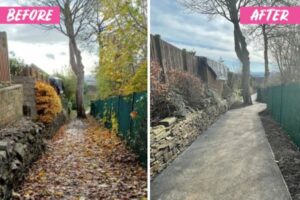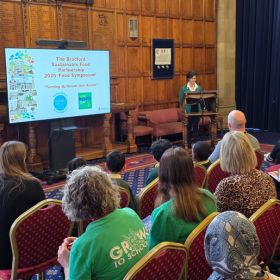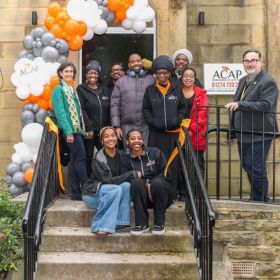It’s Walk to School Week 19 – 23 May!
May is National Walking month, and we want to encourage as many children as possible to walk, wheel, cycle or scoot to school and join in with this year’s Walk to School Week!
If you usually drive your children to school and can’t walk the whole journey, you can still join in by parking a little further away and maybe walking at least some of the way.
Walking is one of the easiest (and free!) ways to improve health and wellbeing. Starting the day with a walk to school helps children to feel wide awake and ready to learn when they arrive.
Make it fun for younger children!
- Ask parents who live nearby to join you and all walk together!
- Take it in turns with other parents to walk children to school.
- Download a copy of our ‘What did you see?’ A to Z to spot things beginning with every letter of the alphabet on your way to school! (If you can find something beginning with X or Z we want to know!)
- Encourage your child to boost their health by cycling or scooting to school as a healthy alternative.
Being physically active can help children in lots of ways. It can have a really positive effect on mental wellbeing and sleep quality. It also improves personal and social development and helps to build strength in bones, muscles, hearts and lungs.
For older children:
- Encourage them to walk to school with friends so they have more time to catch up!
- If they don’t want to walk and they have a bike, encourage them to cycle to school.
- Encourage young people to eat a nutritious breakfast before they leave, so they are fuelled for the day.
NHS guidelines recommend that children 5 to 18 years should do at least 60 minutes of moderate or vigorous intensity physical activity each day. It’s also important to reduce the amount of time spent sitting or lying down and break it up with some activity. More info here.
Our 20 Minute Movement encourages children to split this amount up into three manageable chunks of 20 minutes each day. Click the link below to find out more.
Did you know that in the UK, the school run is responsible for half a million tonnes of CO2 emissions each year? Walking to school can help to reduce these harmful emissions and improve the quality of the air we breathe.
Bradford Council were awarded funds from Active Travel England through the Active Travel Fund Tranche 4 to improve a number of walking routes to schools. Five of these have successfully been completed with another five schemes planned for the future.
A new surfaced footpath along the side of the playing field in Asa Briggs Park provides a smooth all weather access to Stocks Lane Primary avoiding the road.
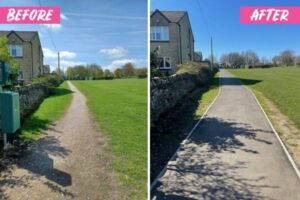
On Barnard Road there were no footways under the railway bridge which meant children had to walk in the road past parked vehicles to get to school. New footways under the bridge now provide a safer route to Bowling Park School.

There wasn’t a footway along Brownroyd Hill so a new footway has been created to provide a safer route to Co-op Academy Grange and Co-op Academy Southfield.
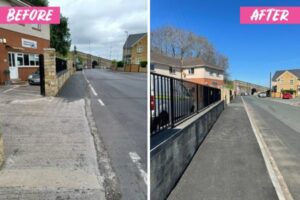
The footpath running between Redburn Road and Wilmer Drive was overgrown and in a poor state of repair. The steps have now been repaired and sections have been resurfaced to provide a better walking route to Heaton St Barnabas Cof E Primary School.

The footpath from Griffe Drive to Shirley Manor School was unsurfaced along one section and the paving was uneven on another with a pinch point. The school wouldn’t allow access to the school from the footpath because of its poor quality. The surface has now been improved with the pinch point removed by diverting the path around tree which also required moving the fence.
